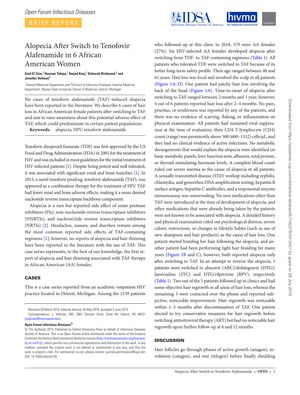Alopecia After Switch to Tenofovir Alafenamide in Six African American Women
June 2019
in “
Open Forum Infectious Diseases
”

TLDR Six African American women experienced hair loss after switching to a new HIV medication.
In a June 2019 case series, six African American women aged 40 to 61 developed alopecia after switching from tenofovir disoproxil fumarate (TDF) to tenofovir alafenamide (TAF) for HIV treatment. The hair loss occurred within 2 months to 1 year after the switch, with most cases happening within 2-4 months. No other causes for the hair loss were identified. After switching to alternative antiretroviral therapies, two patients experienced hair regrowth and three reported subjective improvement. The study suggests a potential link between TAF and alopecia and underscores the importance of including diverse populations in clinical trials to identify possible side effects. The study did not receive financial support, and one author had potential conflicts of interest. Verbal consent was obtained from the patients, and the data collection was approved by an Institutional Review Board.




